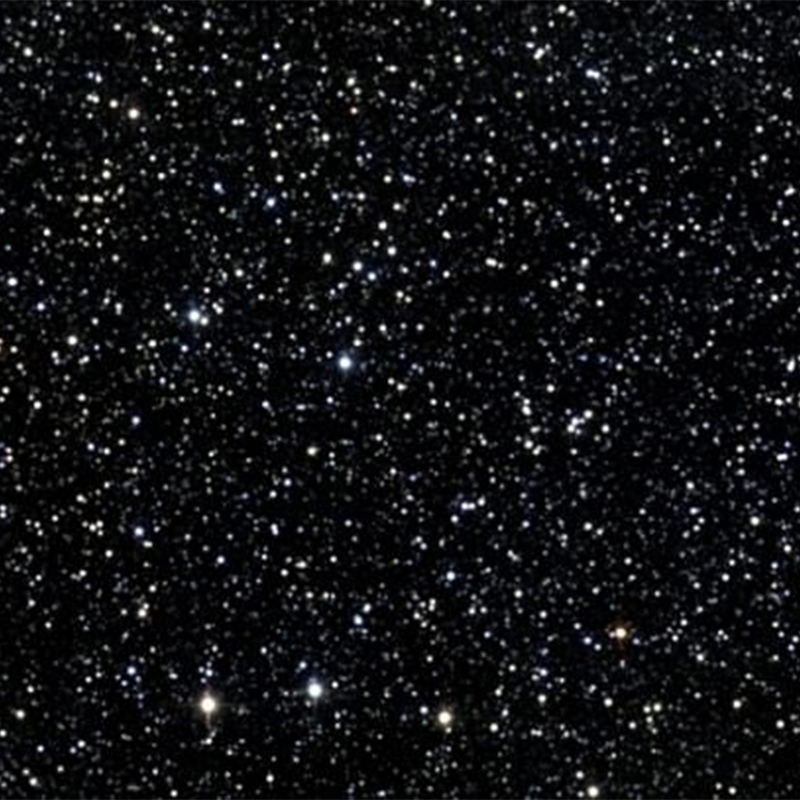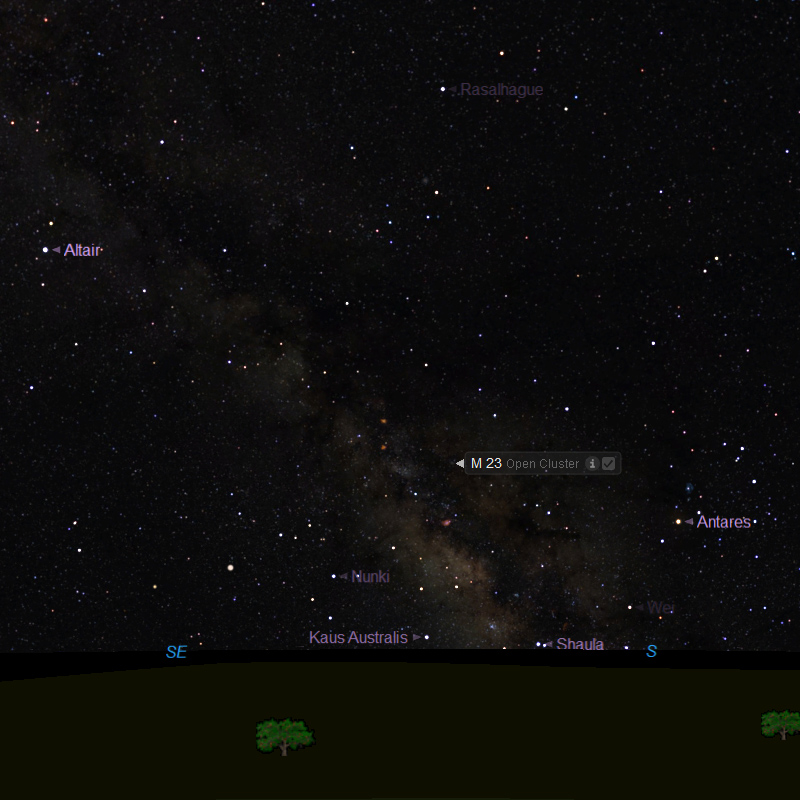M23

Credits: ESA / Hubble & NASA
Messier 23, also known as NGC 6494, is an open cluster of stars in the southern constellation of Sagittarius. It was discovered by Charles Messier on June 20, 1764. M23 can be found with binoculars or a modestly sized telescope. The cluster is positioned in front of "an extensive gas and dust network", although it is unclear if there is an association between the two.
Facts about M23 by Keith Turnecliff
The cluster lies at a distance of 2,150 light years from Earth and has an apparent magnitude of 6.9. It has the designation NGC 6494 in the New General Catalogue.
Messier 23 has a radius of 15 to 20 light years and contains 176 confirmed members.
Most stars in the cluster are between 10th and 13th magnitude, and about 100 stars are brighter than magnitude 13.5.
M23 has an estimated age of at least 220 million years, which makes it one of the older known open clusters in our galaxy.
Messier 23 can easily be seen in binoculars and is best viewed in small and moderate-sized telescopes. 6-inch and 8-inch telescopes will resolve dozens of the cluster’s stars.

Best Viewed with resolution 6248 x 4176.
Credits: Image courtesy of Starry Night Pro Plus 8, researched and implemented by Keith Turnecliff.